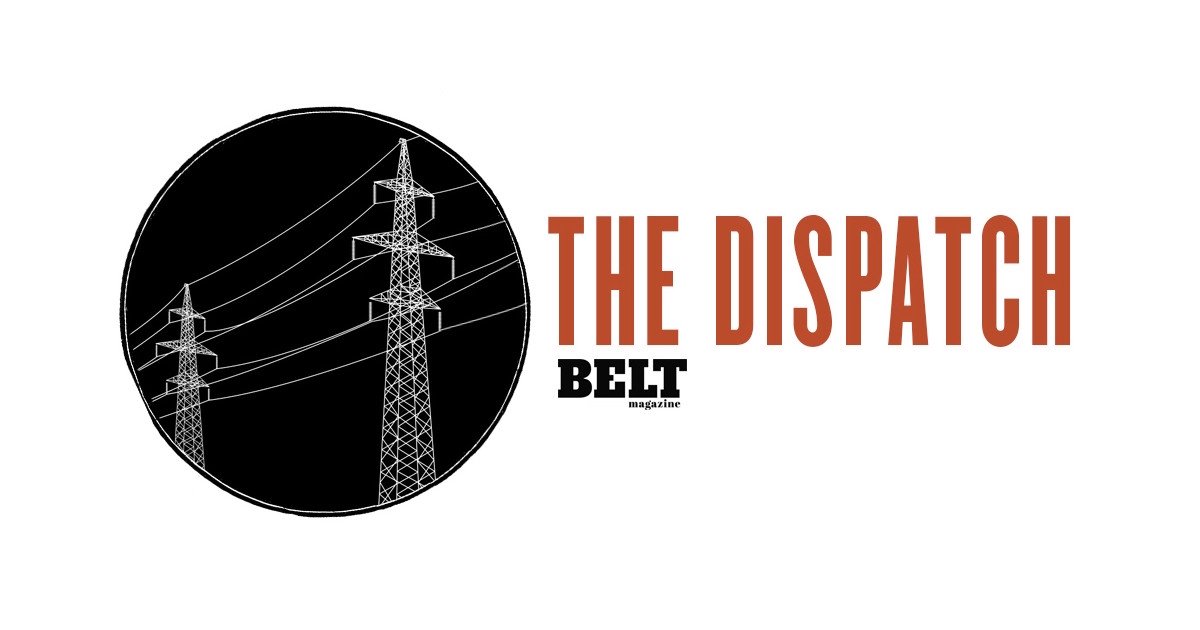Centralia became an attraction for both horror movie fans and ordinary people fascinated by the story.
By Eric D. Lehman
I first learned the story of Centralia, Pennsylvania as a child, driving in my parents’ car through the mountains beyond the Blue Ridge. The fire had been making national news for several years, and a documentary appeared on PBS in 1982, which must have when my parents told us the story. Fascinated, my brother and I scanned the hills for smoke. I don’t know how close we actually were to the town on that drive, but to us it seemed that the fire could spread, could appear anywhere, connected by the vast seams of anthracite coal. The vast underground caverns I imagined while playing Dungeons and Dragons were real, and maybe the fires of hell, too.
This story stuck with me throughout my adolescence. In my personal mythology, it became a metaphor for abandonment, for destruction, for hell. More than that, knowing that it was a real place that existed not far away prompted something else. It might have had something to do with the fact that my great-grandfather and his brother both worked – and were both injured – in a mine just south of Centralia, the Lincoln Colliery near Pine Grove. Their fathers, grandfathers, and cousins were all miners, and my grandfather was the first to “escape” as he called it.
Coal seam fires were nothing new or strange to those miners; instead fires were a realistic workplace danger to be avoided. There have been many other similarly persistent fires over the years, in places like Carbondale, Pennsylvania, and New Straitsville, Ohio. The Brennender Berg in Saarland, Germany was lit in the astonishingly early year of 1668 and has continued to smolder for nearly four centuries. My great grandfather was no doubt familiar with the Red Ash Coal Mine in Laurel Run, started by a carbide lamp in 1915 and, like Centralia, still burning today.
The Centralia fire may have appealed more to the country’s popular imagination because it happened so recently, long after the mining itself had ceased. As the age of television brought stories into the living room of American families, things became somehow more real and more immediate. Things became closer – closer even than the short drive up Route 61 from my childhood home outside of Reading, or even shorter drive from my grandfather’s in Pine Grove. Today, the internet has brought events even closer, into phones in our hands, and we all watch videos of disasters as they unfold daily around the world. We get to judge and to condemn, to find a villain in a local bureaucrat or the monster of climate change.
But the fate of Centralia is a tough story to pigeonhole. The tale doesn’t bear a lot of similarity to, say, the tragedy of the Johnstown Flood, because no one was killed, at least directly. It doesn’t resemble the recent derailing in East Palestine, Ohio, where there seems to be a corporate villain to blame. After all, was this the fault of the long-gone coal companies? The local government? The state? Maybe it’s a story of refusing to deal with the legacy of the past? Or is it about ignoring our impact on the earth, even when it is literally on fire? Perhaps all of these, or none.
Recorded stories of Centralia begin in 1770, when the valley was first surveyed and soon afterwards connected to the rest of Pennsylvania by the Reading Road to Fort Augusta. Signatory of the Declaration of Independence Robert Morris bought much of the valley but lost the property and was sent to debtor’s prison. In 1842 the Locust Mountain Coal and Iron Company bought the land and planned a village, which engineer Alexander Rae named Centreville. By 1856 two mines opened and nine years later a branch of the Lehigh Valley Railroad was constructed to transport coal over the Blue Ridge to eastern Pennsylvania. The town of 1300 people was renamed and incorporated.
In 1868, Alexander Rae was murdered by the three members of the Molly Maguires who were convicted and hanged in 1878. Nevertheless, mining continued unabated, and in 1890 Centralia boasted 14 stores and 27 saloons. This triumphant peak did not last long. By the time the stock market crashed in 1929, the town had already declined in population and wealth. By the 1960s all the mining companies had closed shop. But rather than being the end of the story, that was when the trouble began.
Just before Memorial Day 1962, the city council ordered the landfill in an abandoned strip mine pit cleaned up. In those days that meant they would set it on fire to burn the trash. Unfortunately, even though volunteer fireman sprayed water to control the blaze, fires mysteriously began to appear nearby over the next few weeks. After investigation, they discovered a hole under the landfill dropped into the rabbit warren of old coal mine tunnels. They pumped water down the holes and covered the surface with clay. Too late. The fire burned on.
Over the years, further unsuccessful efforts included digging out trenches and flushing out the fire with crushed rock and water. The out-of-control burn created toxic gases but few paid attention until 1979 when the mayor checked the fuel level of the underground tank at the gas station he owned. The dipstick seemed hot, so he lowered a thermometer. It read 172 degrees. Then a young boy fell into a 150-foot sinkhole that opened in his backyard. Plumes of hot steam erupted from the earth, with lethal levels of carbon monoxide. A few years later, U.S. Congress allocated $42 million for relocation, and most residents took the deal. By 1990 only 63 people remained. The buildings were condemned, the short stretch of Route 61 through town was closed, and the zip code was discontinued. Evictions of the remaining residents began but were halted when the others sued to remain. The last seven residents won the right to stay in their homes until they died, after which the property would be forfeited to the state.
When I lived in Pennsylvania, I passed by or through Centralia several times in buses or rideshares during the 1990s. I remember scanning the hills for smoke as I had done as a child. Prompted by my stories and perhaps by my regret, my brother and his wife stopped there a few years later while on a long rural drive from her home in Loch Haven to the Yuengling Brewery. They parked at the blocked-off graffiti highway and walked down the cracked and overgrown concrete past a sign that said “Warning – Danger: Underground Mine Fire. Walking or Driving in this Area Could Result in Serious Injury or Death. Dangerous Gases are Present. Ground is Prone to Sudden Collapse.”
On the side of the highway the land dropped off steeply into a glen where smoke rose into the winter sky. “It did not look stable,” said my brother. “They didn’t need the sign to tell me that.” They stayed a half hour, no more, snapping photos amidst the silence. “I felt like I was not supposed to be there, like I was in a non-habitable space,” he continued. “It was eerie.” Other friends and family said much the same. Indeed, Centralia always felt like a strange and sad part of our Pennsylvania upbringing. Some of my distant Lehman relatives likely lived there, and I could easily imagine the same tragedy happening to others, living as they did amongst the fragments of coal country. It seemed personal, despite its appearance on national news.
That changed somewhat when versions began to appear in popular culture, from Dean Koontz’s 1995 book Strange Highways to David Wellington’s Vampire Zero. Screenwriter Roger Avary researched it for his movie version of Silent Hill. In the 2010s, it became easier and easier to film and upload videos to the internet, and one result was that disaster tourism metastasized in abandoned and dangerous places, from flooded neighborhoods to abandoned amusement parks to the Chernobyl exclusion zone. Centralia became an attraction for both horror movie fans and ordinary people fascinated by the story. Soon there were dozens of “documentaries” and exploration videos of the abandoned valley, which only fed the appetite for more.
Because Centralia was like so many other towns I knew and grew up with, I began to resent this intrusion. This was a tragedy, after all. Or was I being a hypocrite? How was my own fascination with this coal seam fire any different? It probably wasn’t. We all slow down to look at the car crash. We all draw our own lessons from someone else’s tragedy. Maybe that is the most unsettling part of all of this – how we all apply meaning, whether personal or political, whether well-reasoned or fanciful, to a very real event that involved very real people in a very real town in central Pennsylvania.
The fire is unconcerned by my conclusions, and yours, and the ones a hundred years from now. It burns, and smolders, and returns stronger than ever. It moves deeper into the earth and in many directions, slowly chewing through the coal, sometimes losing momentum, sometimes gaining, causing sinkholes and cavities, sending carbon and gases into the atmosphere, seemingly unstoppable by man or nature. It will outlast us all.
Eric D. Lehman is the author or editor of over twenty books, including New England at 400, The Quotable New Englander, A History of Connecticut Food, Literary Connecticut, A History of Connecticut Wine, Bridgeport: Tales from the Park City, Hamden: Tales from the Sleeping Giant, Insiders’ Guide to Connecticut, The Foundation of Summer, Connecticut Town Greens, and Afoot in Connecticut: Journeys in Natural History, nominated for the Pushcart Prize.






